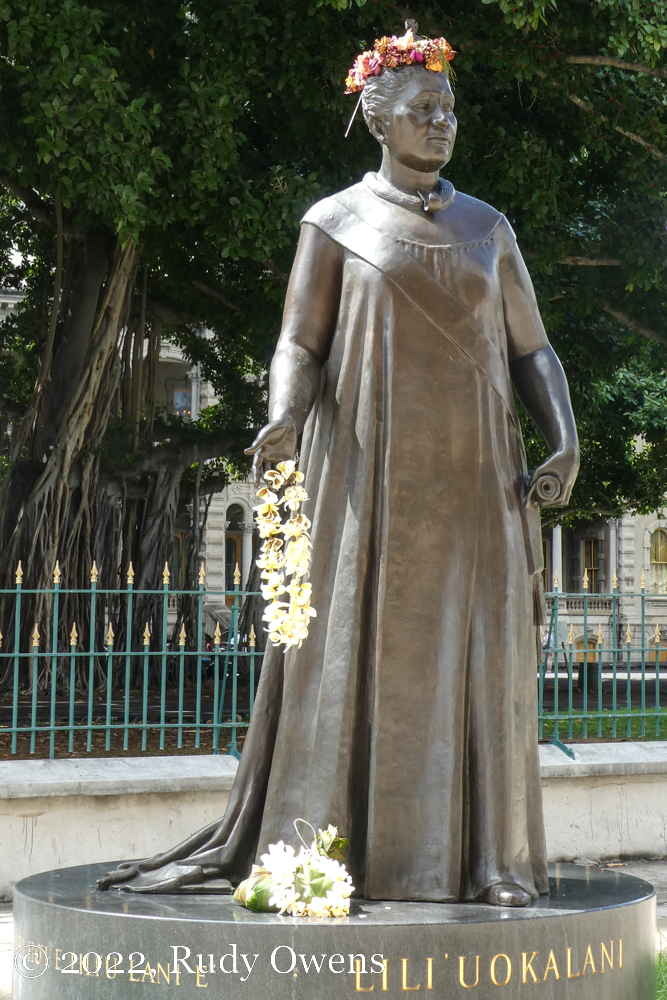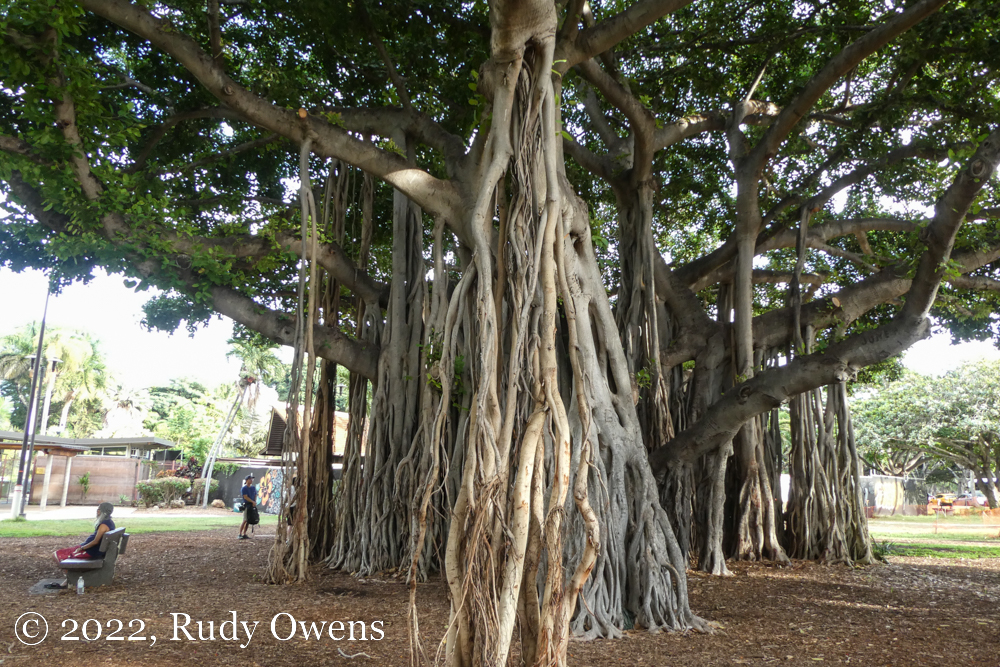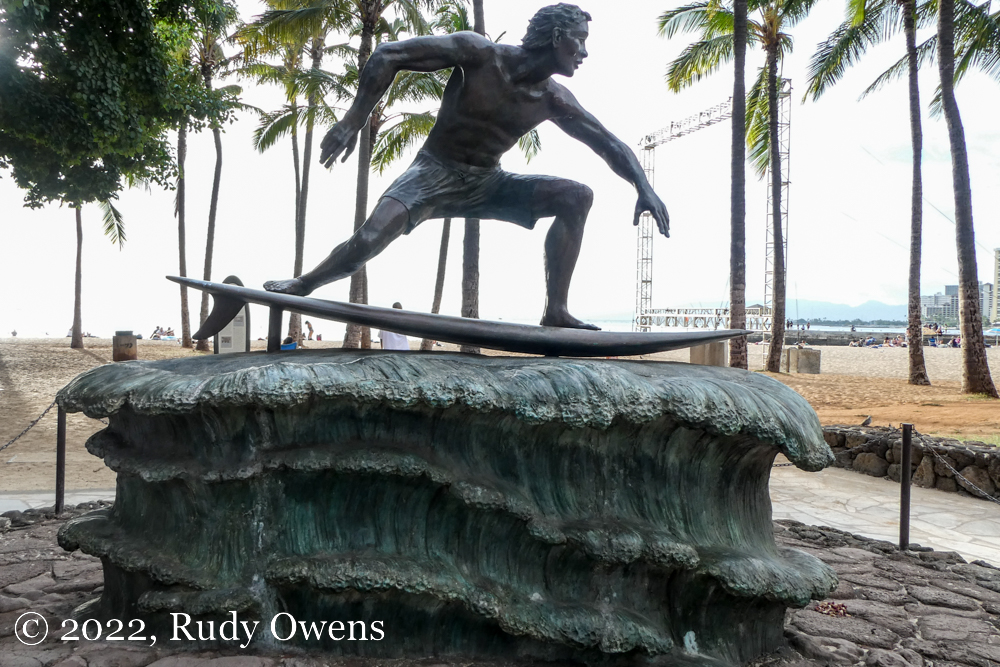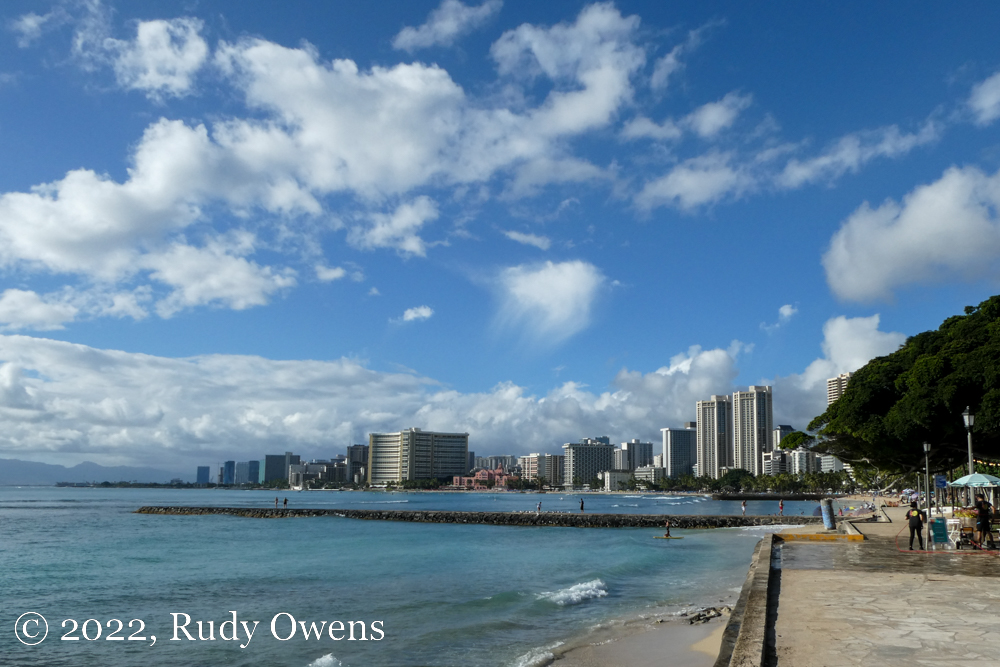I normally try to avoid popular tourist dens when I travel.
I prefer to learn about new places and not expose myself to the corporate, global tourism culture that makes holidays to Bali, Cancun, and Paris all blur into bland rituals to relax those wealthy enough to fly around the world for temporary pleasure.
In late October 2022, when I took a long overdue short holiday, I had little time to plan for a true learning adventure. I found myself suddenly between two jobs and a small window to organize. That meant I needed to find a place that aligned with my interests and could be reached quickly.
My plot emerged overnight—to surf in warm, tropical waters. I had nursed this scheme for years. This also meant breaking my self-imposed travel rules.
After six years of surfing in the cold Pacific waters off Oregon’s shores, I craved warmth. By the time I booked this trip the last week of October 2022, I had been irregularly surfing the cold, feisty waters of the Oregon Coast since 2016. That also made me an almost entirely cold-water surfer. (I don’t count my few past efforts in Hawaii in 2009 or Australia in 2007 as real surfing outings.)
I booked a three-night, four-day trip to one of the most famous of tourist destinations in the Pacific, on the Island of Oahu. Traveling to Waikiki meant I was embracing its long-documented excesses symbolizing global tourism, especially for Americans and Japanese travelers.
The least I could do on the trip was learn more about the place.
I soon discovered after booking my trip that Waikiki was once a sacred site, rich in aquaculture and sea harvesting for native Hawaiians. The last century saw it paved, developed, and transformed into a tourist haven, attracting millions of annual visitors the world over.
That transformation damaged the local environment and displaced its original inhabitants, all through the historic systems of colonialism and global capitalism. My self-described adventure would reward this victorious new reality. My consolation would be honoring the sport Hawaii generously gave to the modern world—surfing.
I found a surprisingly affordable hotel, the Pearl Waikiki. It catered to budget travellers like me, by Hawaiian tourist standards. It also put me a short walking distance from Queens, a gentle surf spot, where I surfed for three days. I needed a place that allowed me to rent a board and put in the ocean without driving. I literally could pick up my board from the surf shop, walk two blocks to the famous Waikiki Beach, and paddle out.
Offshore adventures
As surfing goes, I am not that great. I rented mediocre boards, not a performance board. That was a mistake. The shop owners seemed reluctant to let me rent a nicer board, or maybe we had a simple misunderstanding. It may not have mattered, really.
Still I was able to catch my requisite number of rides, most on my final day. I will never forget my final ride and the sounds of the board slapping on the wave face as I rode a beautiful break to the shoreline.
The waves were at most four feet high, and the swells came in irregularly. Most of the time I spent in the water with other surfers consisted of gazing at the sea, bobbing in the small swells, and waiting.
In short, I did what surfers mostly do.
The water sparkled a rich, aqua-marine blue. Best of all, the water measured a very warm 79-81 degrees Fahrenheit. For an Oregon surfer, who has always worn a 5-4 wetsuit for cold water, this represented a radical change. I could wear board shorts and a rash guard surfing shirt and not once shiver.
For some of my hours floating in the water, rainy clouds painted rainbows above the nearby Diamond Head crater and the skyline filled with bland, tall Waikiki hotels. The surf reports I followed predicted larger swells. They never rolled in.
Out in the water, I found some nice moments of surf fellowship with some older local men. They rode old, beat-up long boards. They were as hungry for nice waves as I was. Like me, they came out in the early morning, just after 6 a.m., enjoying surf time, but taking it seriously too. Surfing is serious business, even if its spirit lies in finding moments of peace.
Finding a wave also requires a mixture of patience and positioning. One waits, while constantly reading the ocean for signals where to paddle one’s board for just the right ride. When they come, everyone moves into position.
Over the three days I surfed, I saw about a dozen male surfers who could be called hot shots. Some were haoles, or white guys, who to me looked like corporate lawyers in surfing gear. They didn’t smile much as they confidently popped up and cut their lines effortlessly in front of beginners to remind them who the alphas were, even at a mostly tourist surf break. Most of the surfers at Queens were visitors, like me.
I also could not believe how fit and beautiful some of the local women surfers looked. They resembled advertisements for women’s sport fashion brands, with perfectly sculpted bodies that came straight from a Patagonia women’s swimwear photo shoot. I had not seen such fit and good-looking people like this in a long time, at least in the water. They reminded me how much this sport attracts the beautiful, the confident, and the strong.
There were other locals who did not look like statuesque surf pros I see on YouTube channels dedicated to global surfing. But one could tell they lived here. They had the moves, knew the waves at this break, and mastered the take offs at always the right second. I loved their style.
Mostly, I appreciated the laid-back vibe. Even when the irregular good wave came, with a dozen riders paddling at once to catch it, no one barked at newcomers for violating the unwritten but clearly known surf etiquette. Those globally recognized norms, which create order when there could be chaos and real conflict, were egregiously violated by nearly everyone.
Even then, no one yelled or gave the “stink eye” glare of surfing displeasure. After one wave, I quickly apologized to a surfer my age, who I thought I had cut off, and he waved it off saying, “No worries, man. This is Waikiki.”
Onshore adventures
When I wasn’t surfing, I explored the area just east of the Waikiki strip that includes the state monument site called Diamond Head. The caldera can be seen nearly every post card ever taken at Waikiki and looking east on the shore. Geologist suggest the crater was formed about 300,000 years ago, during a single and explosive eruption.
Today most of the site is protected, but accessible to hikers for a small entrance fee to hike to the crater’s rim, with its surrounding slopes off-limits to all. The state estimates more than 1 million visitors a year visit the crater, trudging up to the crater overlook that points to Waikiki’s hotel skyline.
From my hotel door out and back, going around this extinct volcano, I estimated the distance at six miles, with change. It was a perfect runner’s outing too. The air temperatures both mornings were a bit warm, at 85 degrees Fahrenheit. I came back a sweaty mess, the way a good run should leave one. My foot-only adventures turned into my unexpected trip surprises, taking me to a famous local spot, but one rich in beauty and natural wonder.
My running route, and also one used by perhaps tens of thousands of runners before me, passed on a bike path and multi-use trail surrounding the crater. Even as a natural monument, it also is fully surrounded by developments and high-end homes on its southern face looking onto the Pacific Ocean.
My run hugged Kapiʻolani Regional Park, past the Waikiki Shell performance stage and Honolulu Zoo, up Monsarrat Avenue, and the around the crater’s outer walls. In addition to the expensive homes with ocean views on the south side of the crater, I passed Kapiʻolani Community College and the State of Hawaii Department of Defense headquarters.

Best of all, my route gave me a perfect overlook of two amazing surf spots called Cliffs and Lighthouse. From this overlook I could see the local “heavies” riding beautiful waves in the mid-morning when I did my runs.
At the overlook, I talked to a local man in his late 50s, who likely had Chinese ancestry, or maybe mixed heritage, as do so many in the state. He was smiling and still dripping wet. He had just wrapped up his morning set with a short board. He let me know both spots would welcome newcomers.
He said he didn’t have a good outing, but his face was beaming that glow a surfer wears when they come out of the water. I felt a bond with him as only surfers can feel discussing the waves and surf locations. Unfortunately, my trip did not involve renting a car or getting to know the local surf spots.
A short trip into Hawaii’s past
My second unexpected highlight happened during my day-trip to historic sites in downtown Honolulu. I reached them using the island’s reliable and renown local public transit system called “TheBus.”
Downtown Honolulu seemed like a ghost town when I went there my second day on the island. The downtown historic, government, and cultural area surrounds the modernist State Capitol building and colonial style state judiciary and pre-statehood administrative buildings. The area is walkable and well worth a half-day visit.
I started my self-guided tour at the preserved Hawaiian Mission Houses Historic Site, with buildings dating from the 1820s to the 1840s.
These were residences of white missionaries from the newly formed United States. One of the earliest missionaries, famed Vermont-born Congregationalist minister and colonialist Hiram Bingham, arrived to the islands in 1820 with other devout Protestants.
Like many of his stern Protestant peers, Bingham was uncomfortable with the culture and indiginous residents he observed. His goal was to replace local culture in the name of Western progress.
In his accounts written 27 years after his “first encounter” with the still unknown culture, Bingham wrote: “As we proceeded to the shore, the multitudinous, shouting and almost naked natives, of every age, sex, and rank, swimming, floating on surfboards, sailing in canoes, sitting, lounging, standing running like sheep, dancing…attracted our earnest attention, and exhibited the appalling darkness of the land, which we had come to enlighten.”
Today, the sights of Hawaiians expressing their indigenous culture that so worried Bingham is the same media-conjured image and Hawaii brand drawing visitors the world over to the state.
A tribute by Bingham’s relatives to the New England preacher is still inscribed in stone on the front wall of the historic Kawaiahaʻo Church that Bingham founded, found next to the mission homes. The engraved homage celebrates his and his New England peers’ colonizing efforts and reads like a painful artifact of white, American expansionism.
The missionaries’ played an important role in creating a dominant, white colonialist culture—amid the arrival of many other immigrants from Asia and Portugal—that influenced the island’s development in the 1800s. One researcher on the impact of the first missionaries, Anatole Brown, noted the missionaries’ impact expanded far beyond the missionary period that formally ended a few decades after their arrival: “By the time the U.S. Navy took interest in the Islands by mid-nineteenth century, the American colonial process was in full swing, as Bibles moved onto guns.”
The colonial process launched by the white settlers ultimately paved the way for the overthrow of the Hawaiian Kingdom in January 1893 by the American government and business interests, in what can be consider an act of war. That cultural and political assimilation almost crushed local Hawaiian culture and cultural traditions in the process, like surfing and hula, which are now the living symbols of Hawaii in the minds of the world.
I next stopped to pay my homage to the statue of the legendary Hawaiian King Kamehameha, the monarch from the Big Island of Hawaii, who invaded at Waikiki in 1795, defeating the island’s local ruler, Chief Kalanikupule. He then unified all of the islands in 1810, when King Kaumualii of Kaui island surrendered peacefully. His statue stands proudly in front the Al’iolani Hale Justice Building. Within a century of Kamehameha’s triumph, the islands would succumb to outside conquerors and far more deadly diseases.
Across from the statue’s outstretched arms is the last home of Hawaii’s monarchs, called the Iolanai Palace. The palace was built by Hawaii’s final king, Kalakaua, in 1882. It remained the house of Hawaii’s royalty until Queen Lili’uokalani, the king’s sister and successor, was overthrown in the January 1893 coup, engineered by a business cabal called the Committee of Safety and led by the U.S. military.
I did not go in, but walked around the expansive palace grounds. Just north of that one finds the State Capitol, completed in 1969. The modernist, square-shaped building has an open-air courtyard, where the midday sun shone down. The building was designed to be unlike most state capitols that mimic classical Roman architectural style. It’s considered one of the most accessible state capitols, where legislative and executive offices are open to the public.






Hanging on its front entrance, by the bronze statue of the overthrown monarch, Queen Lili’uokalani, hangs the 15-foot wide, massive bronze state seal. The emblem shows the state’s royal coat of arms, the seal of the former Hawaiian Kingdom and the 50th state since 1959.
I next walked west across the street from the Iolani Palace, to visit the Hawaii State Art Museum. The museum is free and found on the second floor of the Capitol District Building, a Spanish Mission revival style building built in 1928.
During my visit, the Turnaround Gallery of the facility was hosting a collection of black and white photos taken by photographer Ed Greevy. The collection of remarkable black and white photos document his decades-long collaboration with Hawaiian activist Haunani-Kay Trask. They show different chapters of the state’s environmental and social justice movements. The photos are found in the book “Kūʻē: Thirty Years of Land Struggles in Hawaiʻi.”
The images show resistance protests for Hawaiian sovereignty, starting in the 1970s, and scenes of civil protests against forced evictions, loss of affordable housing for local residents, and the building of the interstate highway across the backbone of Oahu’s mountain range separating the north and south shores.
The gallery exhibit also revealed the clashes on the Islands that began far before the protest period. They continue to this day. Throughout the decades of conflict and change, Hawaiian culture thrived. That can be seen most clearly through the sport of surfing and the first global ambassador of the sport, who grew up in nearby Waikiki.
Waikiki’s legend
If it wasn’t for the legendary exploits of famed Oahu and Waikiki native Duke Paoa Kahanamoku, the forced cultural assimilation by outsiders might have succeeded. His life both reflects and embodies how his Waikiki childhood home turned into its meta-mythical destination for visitors like me.
Kahanamoku was born into Hawaiian royalty in 1890. By that year, Hawaii’s native population had dramatically dropped due to imported diseases brought by missionaries, explorers, and whalers. The imported epidemics of infections, including measles, smallpox, and whooping cough, wiped out Hawaii’s population. It fell precipitously from approximately 300,000 at the time of Captain Cook’s first arrival in 1778 to 135,000 in 1820, and 53,900 in 1876. Kahanamoku grew up in the aftermath of this radical change that nearly destroyed his people.
During his 73 years, until his passing in 1968, Kahanamoku achieved global fame in multiple fields and became a living embodiment of his people. Kahanamoku was the first person to be inducted in the Surfing and Swimming halls of fame, a testament to his life in and around water on Oahu.
Kahanamoku rose to stardom first as an Olympics swimmer and Hawaii tourism promoter.
The island’s business elite paid for his participation in events like the Panama-Pacific International Exposition, in San Francisco in 1915, to promote the Islands’ emerging nascent tourism industry. There he performed the hula, played the ukulele, and posed for photographs in traditional Hawaiian clothes. He also competed for the U.S. team in three Olympics: 1912 in Stockholm, 1920 in Antwerp, and 1924 in Paris, last competing at the age of 34. All told he won three gold and two silver medals for a country to which Hawaii was still relegated to territorial status, and only recently occupied militarily.
In the 1920s, he lived in southern California during the early years of Hollywood. He found bit parts as a minor screen actor in more than 25 films. Unfortunately, he was cast in “ethnic” roles because of deep racial biases in the studios and wider culture. But his legend as a surf promoter took root.
Kahanamoku also had achieved renown as a surfer and surf ambassador. In 1915, he traveled to Australia, to Sydney’s Freshwater Beach, introducing the Hawaiian sporting tradition to the continent that is now synonymous with surfing.
According to one account of this trip, “Duke and Australian surfers sealed an eternal alliance.” His most legendary ride took place in 1917, when he reportedly rode the largest wave ever, towering some 30 feet, at Waikiki on his 16-foot wooden long board. Kahanamoku reportedly caught the monster at a surf spot called Castle’s, off Waikiki, and took it all the way to another surf break called Publics, by Kapiolani Park, then into Cunha’s.
In California, during his Hollywood years, he popularized the nascent sport, taking out his long wooden board and visiting now-famous surfing spots, such as San Diego, Newport Beach, Santa Monica and Malibu.
In the 1930s, Hawaii’s so-called “waterman” returned to his native home. Kahanamoku was elected sheriff of the City and County of Honolulu in 1935, and then held that role for 13 terms, including the entirety of World War II. For his final life act, he was appointed and served as the official “Ambassador of Aloha” after statehood was granted in 1959—a position that embodied how he lived his life, according to many from Hawaii.
“The Duke,” as he is forever and famously known to surfers and the wider public, died in 1968, just at the global sport of surfing was taking off with surf movies, global tourism, and surf-themed rock and popular music. His ashes were scattered in the Pacific Ocean at Waikiki.
Even before his death, his legacy was questioned because of his Christian faith (his mother was a devout Christian) and his perceived deference in the early 20th century to Hawaii’s self-named Committee of Safety—the powerful business group that two decades earlier had ousted Hawaii’s last ruling royal monarch, Queen Liliʻuokalani. The group had employed him and bought him a home in his beloved Waikiki.
Despite Kahanamoku’s controversial ties from his early life, in an era of rampant prejudice, his fame has grown, just like the global sport and lifestyle he helped to pioneer. In fact, his name and legend continue to grow in value.
In recent years, Kahanamoku’s surviving kin and the super-rich elite of Hawaii have locked legal horns over ownership of his lucrative global name and brand. “More significant, though, is the anger that the war has aroused among native Hawaiians, who perceive it as an appalling exploitation of a revered cultural icon,” noted a Nov. 16, 2003, Los Angeles Times story on the legal dispute over his name and legacy. “The conflict brings into focus a growing tension in Hawaii, unseen by most tourists, but a bitter, daily reality to island natives—a stinging reminder of a culture lost to commercialism.”
Final aloha
Like many visiting Waikiki, my trip would not have been complete without watching a traditional Hawaiian music and dance show on Waikiki beach. It seemed to embody the clash of Hawaii’s surviving culture and the tourist-driven capitalism visible in the international hotels that overlooked this famous stretch of sand and water.
Several times a week the shows take place at sunset at the Kuhio Beach stage, near the water’s edge, for visiting tourists. The Hawaiian performers, with dancers, singers, and instrumentalists, share traditional Hawaiian performances and songs after the sun sets and the last surfers pull out their boards from the water. I could effortlessly watch and listen to Hawaiian music and dance every day, and the performance I saw genuinely shared the aloha spirit.
Close to this spot, next to Waikiki beach, stands the popular bronze statue of “The Duke,” with has both arms outstretched and a his signature long, wooden Hawaiian wooden surfboard planted in the ground and towering above him.

During my short stay in Waikiki, the statue was constantly mobbed with visitors, who posed in front of it. Many smiled while mimicking Kahanamoku’s pose. Each time I passed by, I saw a line of visitors from Japan who must have known of his legend, judging by their eagerness to pose next to the bronze replica, adorned daily with fresh flower necklaces called leis.
Like them, and countless tens of thousands of tourists before me, I also snapped my obligatory selfie with my cell phone. As a passable surfer, I smiled in appreciation of the gift “the Duke” and the Hawaiian people freely gave to the world. It felt like a respectable thing to do, even when the world now claimed Duke’s ancestral home and the lands of the first Hawaiian people as a manufactured “paradise” for an escape from our realities back home, wherever home might be.
















